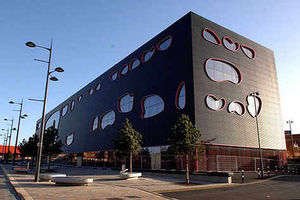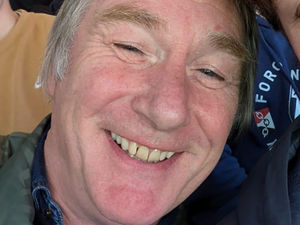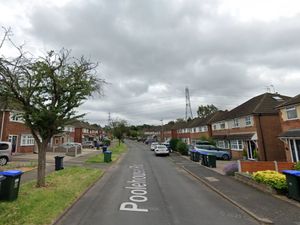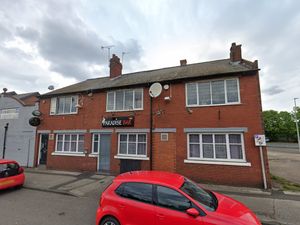No apology over The Public to taxpayers
The boss of a quango accused of allowing controversial Black Country arts centre The Public to go £49 million over budget has refused to apologise to council taxpayers left footing the bill for the "misery" caused.

The boss of a quango accused of allowing controversial Black Country arts centre The Public to go £49 million over budget has refused to apologise to council taxpayers left footing the bill for the "misery" caused.
The Arts Council has never fully explained its role in the £72m West Bromwich venue that went into administration in 2006 and had to be rescued and taken over by Sandwell Council.
Yesterday Sandwell MP Tom Watson, who won a bid to hold an inquiry into how arts and heritage is funded in Britain, finally got his chance to tackle Arts Council England chief executive Alan Davey face-to-face on the issue.
The boss of the publicly-funded organisation was called to give evidence to the Commons Culture, Media and Sport select committee and was grilled for a full 15 minutes by Mr Watson who bombarded him with questions.
And the West Bromwich East MP demanded Mr Davey apologise on behalf of the Arts Council to Sandwell taxpayers left "to carry the can" after the quango quit and pulled its funding from the project.
But despite being asked three times for an apology, Mr Davey refused to give one, insisting the body had "got it right" and left the borough with a venue with the potential to become "a pretty good facility".
The Arts Council, which continued to plough money into the scheme after architect Will Alsop's company went into administration in 2004, spent £32m on the New Street attraction.
But it has since distanced itself from The Public, which finally opened late, incomplete and over budget in June 2008.
The venue has since been dogged by scathing criticism over its unusual design and dubbed "the pink elephant".
After almost a year of tabling more than 150 questions in the House of Commons about the Arts Council and writing to the body itself for answers, Mr Watson got some — but not all.
Asked what the body had learned from the experience, Mr Davey replied: "We had some concerns about a loss of focus as the project got bigger and bigger. We should have been firmer. I think, earlier."
He failed to respond when asked who he thought was responsible for the interactive gallery failing to open — and was unable to reveal the full cost of mothballing the project.
Asked for a final time why he was refusing to take the opportunity to apologise to Sandwell council taxpayers, Mr Davey replied: "I think there is a facility there, that in some ways has some pride in it." The Labour MP also quizzed him about the quango's budget and why it had spent £2.5m over the estimated costs of its staff re-organisation.
Mr Watson also asked him why it had spent £1.2m on the revamp of its London office, including £116,232 redecorating the place and paying a colour consultant £13,500 for advice on the building's grey-colour scheme.
The hearing also heard the body had on its payroll 39 staff with the word "communication" in their job titles; it spent £20,000 on its 2008 Christmas party; and spent £70,171 on drinks receptions and networking dinners between July 2007 and October 2008.
Mr Watson also criticised the body for leaving 5,000 pieces of art "hanging around in storage" at a cost of a third of a million pounds a year to taxpayers.
He said afterwards: "They were the lead funders of this project, £32m and 12 years in, they abandon the building, and he wouldn't say sorry. What arrogance and how typical. It is a national disgrace."
The exchange between MP Tom Watson and Alan Davey.
TW: You spend £1.2 million a year on your head office. Is that a good use of resources? Couldn't you move south of the river and save?
AD: Head office is actually not this building in London, it is London and Manchester. We have now dispersed it. What we did last year and this year was move all our back office functions - personnel, finance, IT and the grant-giving as well as our telephone inquiry service - up to Manchester. And that sort of operates for the whole organisation.
TW: The office in Great Peter Street (London) costs £1.2 million a year. Is that good value for money?
AD: We are there until 2015 and we will be looking at alternative properties to move into beyond that.
TW: Was it wise to spend £116,232 on internal redecoration?
AD: Well we got good value out of that because that allowed us to absorb the London office and to save rent on a separate London building. It allowed us to squash people up and make better use of the space.
TW: Good value includes paying £13,500 to colour consultant Lothar Gotz to advise you on the grey-scale colour on the walls?
AD: I would say he was more than a colour consultant. He was an artist who we asked in to kind of curate the building. Being an arts council I think that is what you would probably expect us to do, to have some kind of artistic sensibility if you like, to the building we are working in.
TW: So when he says, 'the existing building like a mountain . . mountain gets cut into different layers of grey . . experience of climbing up a mountain where you experience different atmospheres according to the high where you are on . . horizontal layers of grey . . layers of grey like different grety tones of clouds and mist . .
AD: That probably describes my working day.
TW: Ok. Mine too, mine too.
TW: You have got 39 staff with the word "communication" in their job titles. What do they all do?
AD: A variety of things.They are not all press officers. We have a very small press office. I think if I am right in saying, that is the pre-reorganisation figure. I'll write back and confirm that. We have a lot fewer officers with "communication" in their title. What we found was that lots of people liked the word "communication" in their title because they thought it sounded sexy. And we found they weren't by our definition communications people at all. They were people who had contact with the outside world and contact with the bodies we fund. Sp when we did the organisational review, we had a good look at that, and only people who really did communications in any meaningful way are allowed to call themselves that.
TW: In a recent parliamentary answer to me you admitted that grant in aid funding was being used to pay off the deficit on the pension fund. Could you tell me how much that figure is after the review of the pension fund in the end of March this year?
AD: We haven't had the figures yet from the review of the pension fund at the end of March of this year. This is part of the employers' contribution that it was agreed several years ago we would make until 2017 in order to pay off the deficit. That means that the employers' contribution to the pension scheme at the moment is 25 per cent. We are dur to be paying that on a long-term, temporary basis until 2017. But, we will see what happens when we get the results of the evaluation which are going to come in towards the end of the year. And we will have to sort of look at the thing properly.
TW: Would you be able to tell me how much lottery funding is being used to top up the pension fund?
AD: I can't give you the absolute figure off the top of my head.
TW: If you could follow that up in writing, that would be great, thanks.
TW: You spent £10,000 nearly at every party conference in 2008 on drinks receptions. Did you do that this year?
AD: We haven't been for two years to party conferences.
TW: Between July 07 and October 08 you spent £70,171 on drinks receptions and networking dinners. Have they all stopped as well?
AD: We haven't had a drinks reception for quite a long time. The last one was probably Christmas before last. It was a very small affair in the foyer. But again. I'll write back to you. We do have dinners with opinion formers, or people who can offer us help, but I don't think we party excessively.
TW: £20,000 on your Christmas 08 party. You've calmed that down as well have you?
AD: I arrived and the party stopped.
TW: Ok. Me too.
TW: In terms of your art collection, you've got 7,500 items in the Arts Council arts collection. Why is the Arts Council holding its own collection?
AD: We don't actually physically keep it. It is looked after on behalf of the nation by the Southbank Centre, the Hayward Gallery, and their job is to get the stuff out, particularly to regional galleries, but also to use it as a resource for curators, particularly in the regions to come and curate from the collection. So it is a kind of national resource. i would like to use it more to be honest. I would like to get on and do that because it bis a tremendous resource.
TW: Shouldn't you give it to a gallery that specialises in that kind of stuff?
AD: It's whole purpose it is to be loaned out. It has been built up over the years. People have donated to it over the years.
TW: Last time I checked you got 1,300 pieces on display and were spending a third of a million pounds a year on storage. That's 5,000 pieces just hanging around in storage.
AD: We'd like there to be more out at any one time. That's partly to do with the resource of actually getting it out and getting it into the kind of places where it could be properly looked after and seen. We spend that amount on storage because we have to store it properly. It's a valuable collection we are holding on behalf of the nation.
TW: The nation won't see it if it's in storage.
AD: The nation sees quite a lot of it.
TW: On your staff reorganisation, which I believe is the sixth since 1993, you have gone £2.5 million over the estimated costs of the reorganisation. Can you explain why that is?
AD:That was the cost of redundancy because more people of a certain age took redundancy than was expected.
TW: Why did you let them all go?
AD: If you have a voluntary redundancy scheme it is difficult to stop them.
TW: No it isn't. If it's voluntary you can say no?
AD: Well, we had our processes and they chose to leave.
TW: What is the most significant piece of learning you've absorbed over the process of investing in The Public art gallery in West Bromwich?
AD: I wasn't there for most of it happening but I have looked at the history of it. I think it's our ability to be firm and to say no when people who are committed, passionate and enthusiastic are urging us to stay with it despite our concerns not being answered. We had some concerns about a loss of focus as the project got bigger and bigger. We should have been firmer. I think, earlier.
TW: Twelve years in and £32 million of other people's money spent, you said no, and the interactive gallery did not open. Who is responsible for that?
AD: Well, it wasn't showing any signs of opening.
TW: Who was responsible for the £32 million of investment that didn't see the light of day in that gallery? Is it you, or somebody else in the Arts Council?
AD: It's the Arts Council.
TW: And who was the lead officer on that?
AD: There were a variety of lead officers over a period of years.
TW: Was anyone disciplined for the loss of £32 million of other people's money?
AD: No.
TW: How did you share those lessons with other people? Have you published a report of any kind to show the learning so that this never happens again?
AD: No we haven't, and that's an interesting idea. We have done an internal exercise. We have looked at the complexity of the risks and how they were managed, and points at which action should have been taken that wasn't. We have shared this with the National Audit Office because we wanted their views. and they have commented that, in terms of lessons learned, we have got it right. But, I certainly will consider publishing something.
TW: Will you publish the reports that were produced by Moss Cooper? I asked you if you would publish them in a parliamentary question and was told that you could not publish them because of disproportionate cost.
AD: Can I return to you with that.
TW: You're going to write to the committee?
AD: Yes.
TW: Are you able to calculate the full cost of mothballing the project through the period of receivership to opening - versus the additional funds that were required to complete the work on the building?
AD: I'm not able to tell you that answer at the moment.
TW: Would you be able to follow up with that?
AD: Yes.
TW: On the completion stage, some people said that it cost an additional £10 million as a result of going into receivership. Is that a figure that you might agree with?
AD: I'd have to get back to you on that.
TW: Can I ask that given this was one of the most significant capital projects in the West Midlands region, why the chief executive of the Arts Council West Midlands nor any other senior officer attended any board meeting of The Public during the build process?
AD: I'll come back to you with that answer.
TW: Would you like to apologise to the people of West Bromwich and Sandwell for the misery you have caused on behalf of the Arts Council?
AD: Well, on behalf of the Arts Council, what I would say is, there's a facility there which is by a world class architect. There's a very good management there that are finding its mission and finding its sense of purpose. So what we have done is we've left the people of Sandwell with what I think has the potential to become a pretty good facility.
TW: You spent £32 million of lottery funding on a gallery that didn't open.
AD: We weren't the only funders, remember.
TW: And you have not taken the opportunity to publish any learning, or apologise to the people that have to carry the can for that - the council tax payers of Sandwell. Just for the final time would you like to take the opportunity to apologise to them?
AD: There is a facility there that is being used, that attracted 110,000 visitors last year, that is being managed by what I think is a good team. We have put £32 million into the area. Sandwell Council hope that regeneration will follow that investment and they themselves have invested money, as has European money, and indeed the RDA.
TW: So that's a refusal?
AD: I think there is a facility there, that in some ways has some pride in it.





